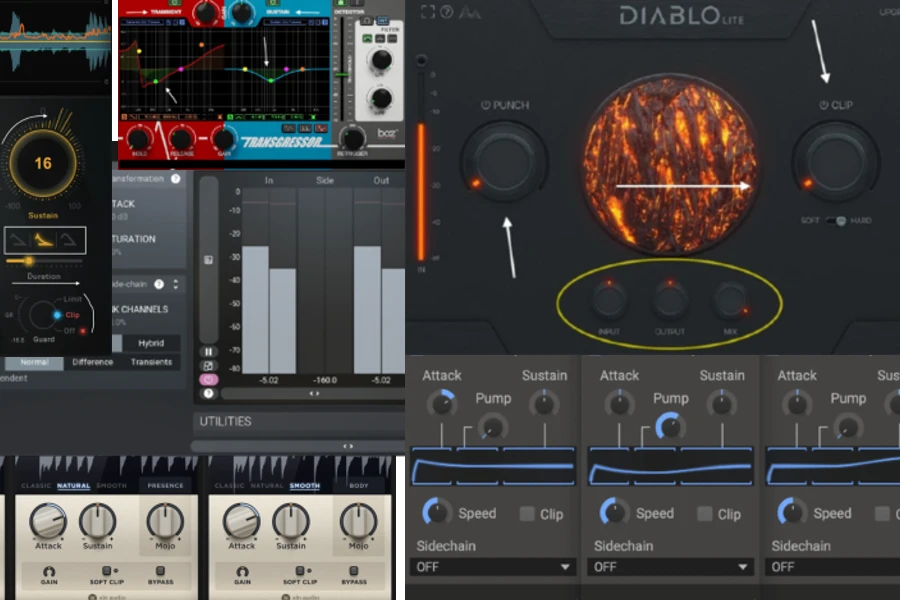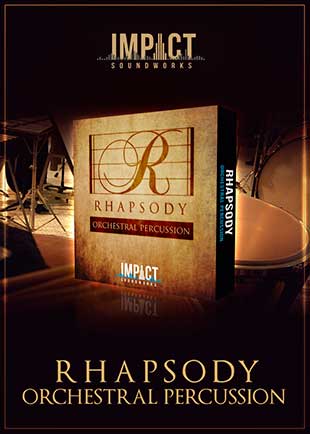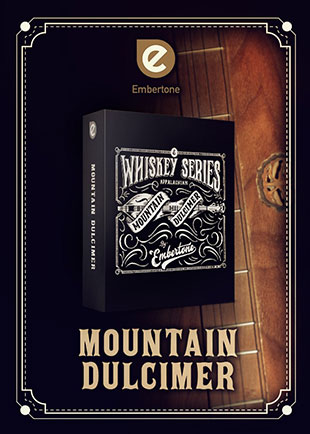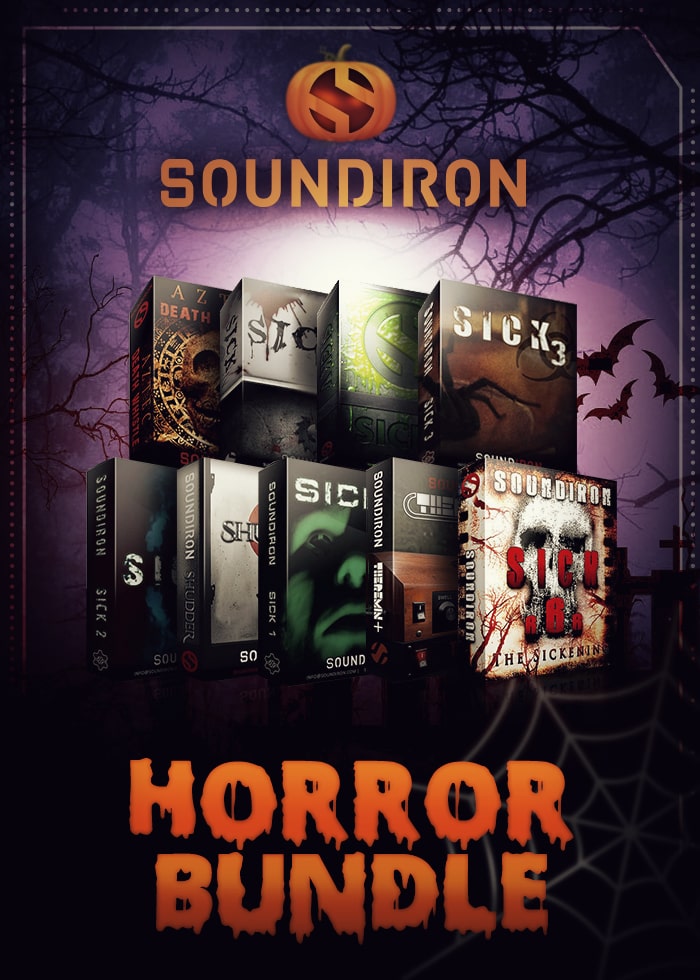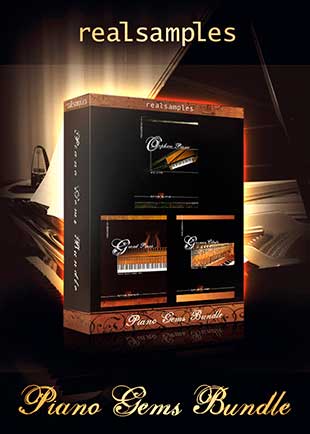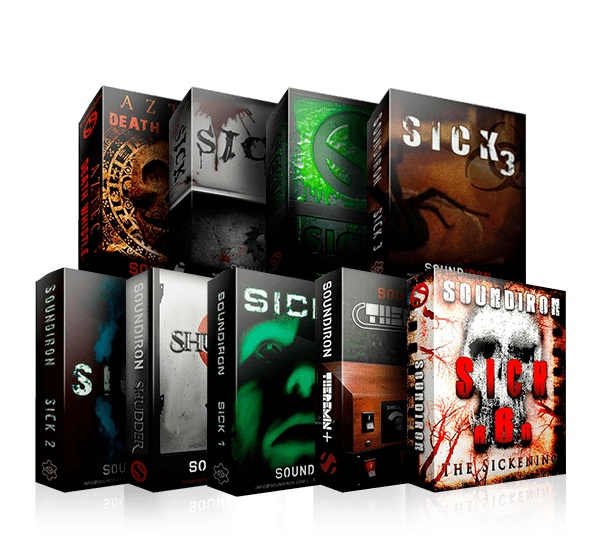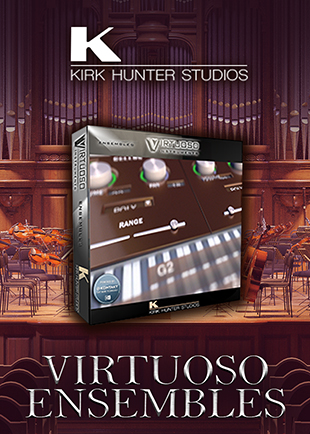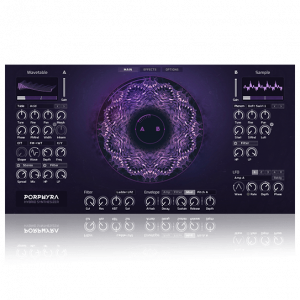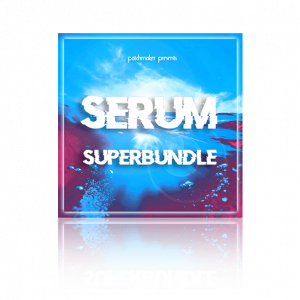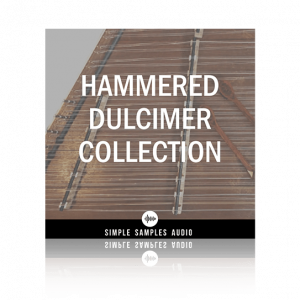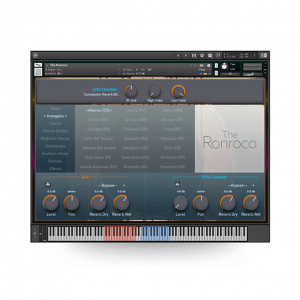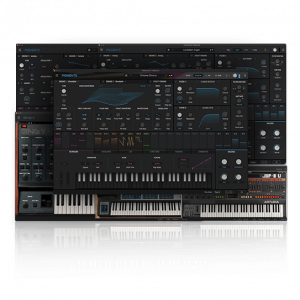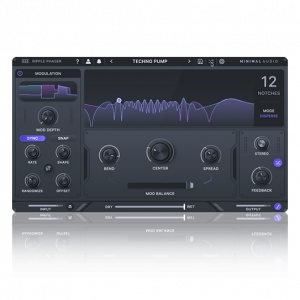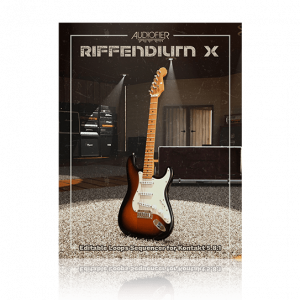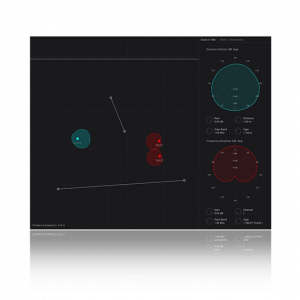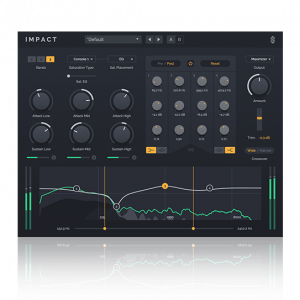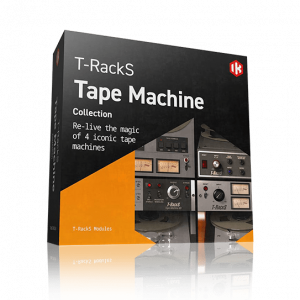In this article, we’re going to talk about the top 6 transient designers and why every single music producer and mixing engineer should have at least one of them in their arsenal.
For most music genres, the drums are everything. If the drums don’t knock right, the track is trash. This is especially true for genres like Hip-Hop, EDM, Rock, POP, Drum & Bass, etc.
The drums in these genres have to sit right. It’s what gets people on the dance floor, keeping their heads nodding and keeping them moving in rhythmic time with the song.
The drums are like the heartbeat of the track. Without solid drums, the track can fall apart.
You have many things going on in a song: lead vocal, background vocals, bass, melody, harmonies, drones, pass, instruments (smooth/plucky), and synths.
There can be a lot of different musical instruments playing in a song at once. How do professional music producers make the drums stay punchy, upfront or in their own space, and well managed?
Aside from choosing the right sounds and good arrangement, the answer is a transient designer.
What Is A Transient Designer?
Transient designers are simple dynamic processors, similar compressors but don’t rely on a threshold. They are great for creating or preserving percussive presence by allowing you to alter the initial attack (beginning) of your drums.
Adjusting the attack of the transient can make your drums sound snappy, soft or find a sweet spot in between.
This is crucial for making your drum samples (or recordings) stand out in the mix, tucked back a bit, or mellow so as not to be overly present or dominate the mix.
Characteristics Of A Good Transient Designer
Transients are important, they allow us to discern the differences between pianos and strings, brass and synths, as well as other instruments.
Think of the sharp attack when a drummer hits a snare or crash or the picking sound of a strummed guitar chord. These little nuances, as finicky as they may be, play an essential role in defining the feel of music.
Here are some characteristics every transient designer should have.
Dynamic Control: Transient designers, unlike compressors, don’t impact the entire sound. They have a more focused approach, which helps keep the natural feel and dynamics intact.
Clarity Enhancement: Boosting the transients of specific instruments, you can make them more dominant or present, making them more clear. This can really serve as a game changer in dense mixes.
Sound Design: Aside from adding clarity and balance to your mix, transient designers can be used creatively.
Want to make a snare sound like a gunshot or blender sound like an underwater creature? Or would you like to give your instruments more of a dreamy effect? With transient designers, all of this is possible and more.
What Are The Top Transient Designers For Music Producers & Beat Makers?
Transient designers aren’t just for giving your kicks knock, making your snares pop and crack, or managing the punchiness of your drums. They can also be used to soften sounds and can quite handy when it comes to sound design.
Quick Transient Designer Tip: Take sounds with reverberated tails and extend their sustain. This not only lengthens the tail but can also highlight and intensify it. Pushing the sustain can also give a unique lift when building soundscapes.
All transient designers can get the job done, but as mentioned before, each has its own characteristics and sound.
Let’s Jump Into Our List Of Top Transient Designers. We’ll focus on the unique features of each.
Waves Smack Attack

Waves Audio has been around for along time. I first caught wind of ‘Smack Attack’ when Focus (Aftermath Producer) was using it in a track breakdown he posted on YouTube/Instagram.
Smack Attack Features: Aftermath’s Focus Put Us On This
Precision Control: The GUI is very intuitive. I love that Smack Attack lets you control transients’ duration of the attack and sustain.
Spectrum: You can see a visual representation of the sound you’re processing in real time.
Sensitivity Control: Governs how the Smack Attack responds to different levels of transients. This acts like a threshold for both the ‘attack and sustain’ settings, a feature most transient designers don’t have.
Shape: You have 3 shape options for Attack and sustain. The first two are best suited for drums and percussion, and the last, given its wider, works well with instruments and synths. Experiment with all 3 on any sound source, there are no rules.
On the Attack, the settings are known as Needle, Nail, and Blunt.
For the Sustain, its Linear, Non-Linear, and Soft Linear
Guard Feature: Smack Attack’s Guard offers 3 modes: 1. Deactivated, 2. Clipping mode with a ceiling set at -0.1 dBfs, and 3. Limiting mode, also capped at -0.1 dBfs.
When Guard is disabled, db overs are flagged with a red indicator. This helps preserve the integrity of your sound by preventing unwanted peaks and distortion.
MTransient: If Precision Were A Plugin
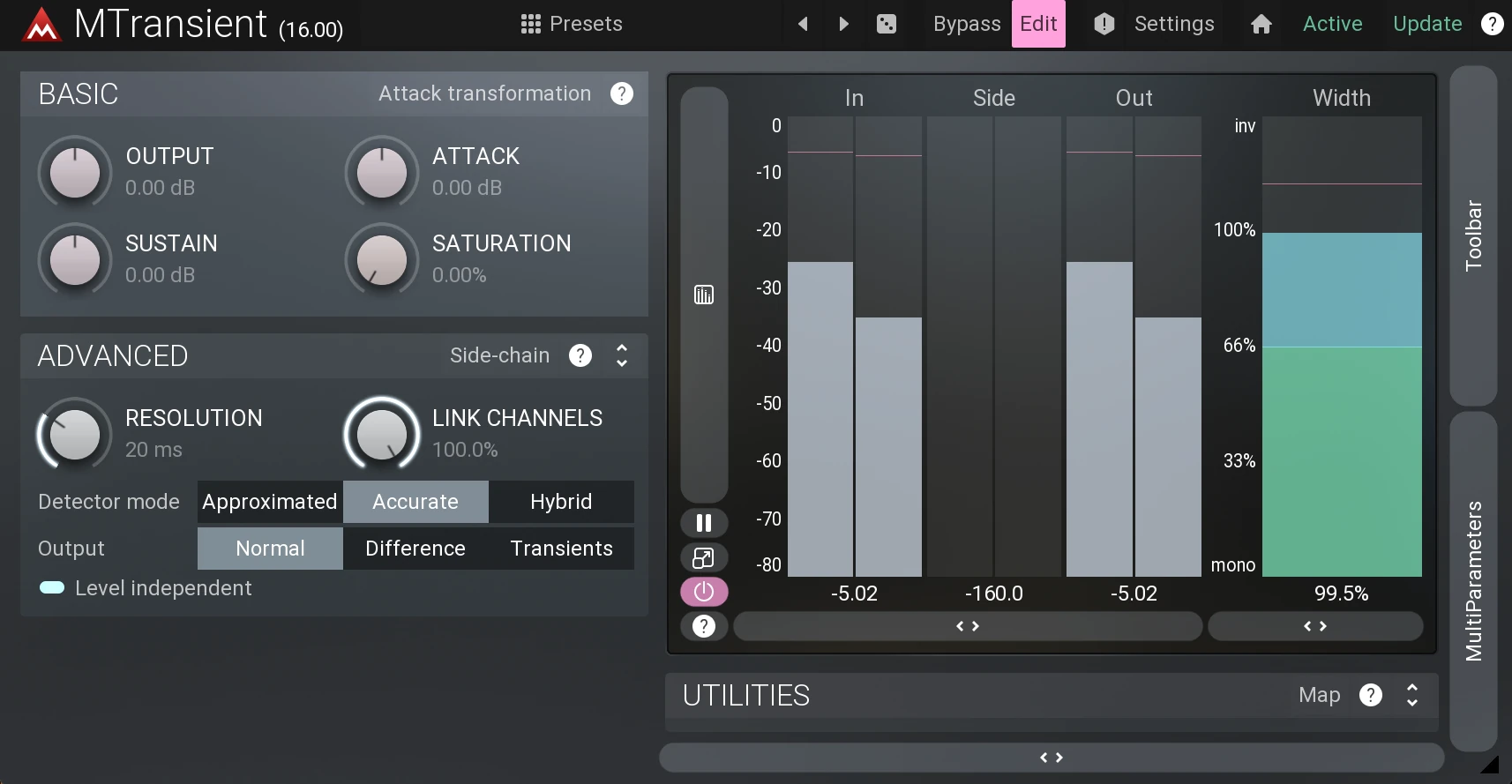
This transient plugin is by Meldaproduction, a company known for creating some of the most feature rich and, depending on who you ask, complex plugins available today.
Melda’s plugins are known for being easy on the CPU, transparent, and as flexible as a seasoned yoga instructor.
MTransient Key Features:
Advanced Transient Detection: MTransient offers an advanced transient detection algorithm, ensuring accurate and musical shaping.
Roll Dice: Randomly selects presets for you with one click, this can be great for inspiration. Cycle through the presets to find something you like and then fine-tune it to your liking.
Customizable/Resizable Interface: The transient designer offers customization in its appearance, allowing you to alter the overall design to suit your preferences. The plugin is also scalable, meaning you can resize it to fit your screen. No more squinting for details, your eyes can take a well deserved break.
Transient Control: Adjust the range of the transient you want to control by setting the resolution between 0-200ms. Additionally, you can manage the transient designer’s output using three modes: normal, different, and transient. This gives you flexibility in shaping and outputting your sound.
Comparison Slots: There are 8 slots labeled A-H for comparing different transient settings. This feature lets you quickly switch between 8 variations. You can also save presets utilizing all slots.
Free Presets: Melda’s user base creates and shares Transient Designer Presets free via their ecosystem. With a simple button click, you’ll have hundreds of presets at your fingertips! You can also share your own if you choose to.
Multi-Channel Processing: While many transient designers work with stereo or mono audio, Melda’s MTransient offers much more flexibility. It can process Mono, Stereo, or a mix of M/S (Mid/Side) and Left/Right channel options.
DS10 Drum Shaper by XLN Audio

XLN Audio, this company has been around for a while and is known for its instruments and the RC-20 plugin that many producers have toted around. Their transient designer is pretty badass as well.
If you aren’t family with it, it’s called the DS-10, definitely worth the price.
DS-10 Features:
3 Transient Modes: DS10 offers Kick, Snare, and Bus. Each mode is optimized, catering to the specific nuances of each setting.
Mojo Knob: This adds unique characteristics and flavor to the drums or whatever sound you’re adding the DS-10 onto. It’s a subtle combinator of distortion and saturation that gives a warm tone via its transient processing.
Visual Waveform: Offers real-time waveform display, it helps visualize what’s being done via processing, and it just looks cool.
Sustain: DS-10 has one of the most beautiful sounding sustains I’ve ever heard on a transient designer. I wish every company would pay attention to it.
Definitely push the sustain on reverb tails with this transient designer.
Transient Shaper by Kilohearts
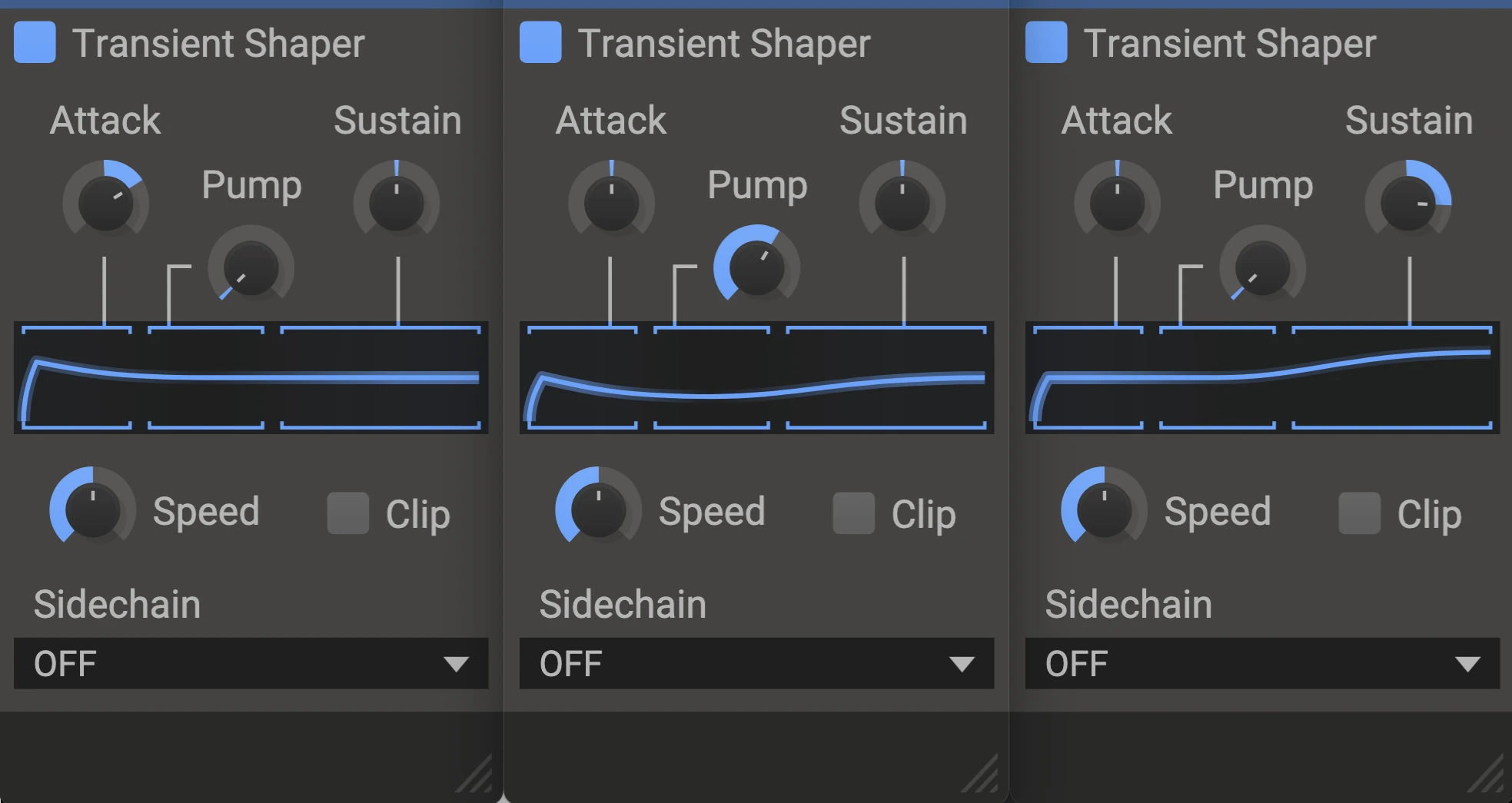
Kilohearts is known for its flexible modular ecosystem, offering a slew of versatile plugins. One that immediately grabbed my attention is Transient Shaper, their transient designer.
At the time, it was low priced (a steal) now, Transient Shaper is completely FREE, and here’s what sets it apart from the rest.
Transient Shaper Features:
Pump: This feature allows you to attenuate the sound directly after the transient, emphasizing the transient without needing to increase the transient’s level.
Reason Rack Extension: I believe this is the only transient designer that is both a universal plugins and a Rack Extension. Yes, Reason is compatible with VST/VST3s, but there are many Reason enthusiasts are out there, so this one is for you!
Sidechain: This feature allows an external source to activate the transient shaper. For example, using a kick drum to dictate the transient of a bassline.
Diablo Lite Drum Enhancer by Cymatics

Cymatics, renowned as a sound design company, has been a go-to for producers seeking royalty free samples and serum presets. Venturing beyond sample packs, they’ve recently jumped into the plugin world.
One of their popular ones is Diablo Lite Drum Enhancer, a free transient shaping plugin.
Diablo Lite Features:
Punch Control: Turn the knob clockwise to boost the punch. This functions like an attack control set to a specific frequency.
Clipper: Offers two settings: soft and hard. The hard setting delivers a sharper sound, whereas the soft setting slightly rounds the sound out a bit.
This is a relatively simple transient shaping plugin, the full version of Diablo is much more complex, but the lite version works wonders.
Transgressor 2: This Comes In Handy

Boz Digital Labs is the brainchild of Boz Millar. If you’re not familiar with their line of plugins, let Transgressor 2 be the first.
Key Features Of Transgressor 2:
EQ Section: Transgressor 2 provides separate EQs for both attack and sustain. Each EQ offers 3 bands, ‘Hi, Mid, and Low.’ This helps a lot when aiming for specific frequencies.
Adjustable Transient Detector: This allows you to set the sensitivity, which improves transient detection and helps prevent unwanted activations.
Sidechain: Transgressor 2’s sidechain function lets you adjust the transient of one sound based on the trigger of another. This ensures the sounds don’t clash and gives you complete control over when the designer kicks in.
The Best Transient Designer Ever Made
There are so many transient designers available and if I could, I’d love to combine the best features from each into a single transient designer plugin.
That said, if I were to create a transient designer, here are the features I’d include.
Savage Attack
Aside from being able to handle standard transient shaping capabilities, this transient design would offer the following processing options.
Tape Saturation: Add warmth and character reminiscent of classic analog tape machines.
Multiband Transient Control: Divide the audio into multiple frequency bands and independently shape transients. Includes mute and solo mode per band. This would ideally offer 6 bands of control.
Threshold Control: Determine the level at which the transient shaping takes effect.
5-Band EQ: Shape the tonal balance. This would allow you to push or pull Bass, presence, air, etc.
Filtering: Lowpass and Highpass filters for precise frequency control.
Mid-Side Processing: Allowing the user to tweak the mid or sides of the audio signal.
Precise Attack & Sustain: I’d like this to be surgical like Melda’s MTransient designer but lush sounding like DS-10 on the sustain.
Clipping Options: I really love the IK Clipper and the saturation it offers. Having this or something similar in a transient designer would be awesome.
Stereo Imager: Enhance the stereo width and depth of the audio signal.
Bus Compressor: This would be for bus use, where you could control the overall glue of sounds. This will be ideal for working with loop based material; drums, percussion, melodic, etc.
Transient Designer FAQ
Can Transient Designers Be Used On Guitars?
Yes, transient designers can be used on guitars. They can emphasize or soften the attack of strummed or plucked strings, making the guitar sound more pronounced or subtle in a mix.
Will a Transient Designer Work On a Synth Bassline?
Yes, a transient designer can be applied to a synth bassline or guitar bass, making it punchy sounding by accentuating the initial attack.
What Is The Difference Between Compressor and Transient Shaper?
A compressor reduces the dynamic range of an audio signal once it passes a threshold. The compressor’s ratio governs how much of the audio signal is compressed.
A transient shaper allows you to increase or decrease the volume of an audio signal’s attack and decay without needing a threshold or ratio setting.
Are Transient Designers Best For Loops Or 1 Shot Samples?
Transient designers work well great on 1 shot samples and loops. Music Producers often use them on drums and percussive sounds, but the best use of a transient designer depends on the needs of the song.
What’s The Difference Between a Transient Tool and a Transient Shaper?
A transient tool, transient shaper, and transient designer are all the same thing, just different names. They are used to amplify and attenuate the attack and sustain of audio signals.
Conclusion: Why You Need A Transient Designer
To put this into perspective, transient designers are excellent when it comes to taming transients as well as adding punch to make things sit in or stand out in the mix without over processing.
Compressors do a great job, but unless they’re multi-band are processing the entire frequency spectrum, and even with a multi-band compressor, you must have a threshold and a ratio set.
With a transient designer, those aren’t needed.
Most of the time, when you hear about a transient designer, people will talk about adding punch and presence to their drum work.
Do not limit transient shaping functionality to just drums and percussion, they work on every sound, from vocals, sound effects, baselines, synthesizers, Foley work… Literally any audio recording.
Sometimes its the nuances of a mix need a little finessing, and that’s what transient designers are great at.
There’s no reason why you, as a music producer, a person mixing their own music or mixing engineer, shouldn’t have a transient designer in their arsenal.
Transient designers are not only invaluable, but also super affordable.
